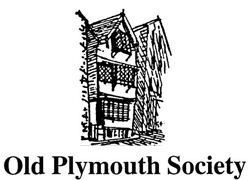by Old Plymouth Society
Published March 2012
Public clocks were important and became landmarks in their own right, as even in the 1930s, not everyone could afford to buy their own timepiece. One of the best examples of these was the Guinness Clock, placed high on the front of Drake Circus, a building which was owned by the Liverpool Victoria Friendly Society who had their offices there. The clock looked down Old Town Street towards St Andrew’s Church. The Electric Sign Company Ltd. who erected Plymouths Guinness Clock on April 1 1937 initially rented the site for 740 a year. It was estimated that the electricity cost about 70 each year. The local maintenance of the Clock was sub-contracted to Messrs W G Heath & Company. The advert was 50 feet long and 13 feet high, with the synchronous clock having a diameter of 10 feet. The teak numerals on the Clock were 15 inches high and were lit by opal red tubes. The legend “Guinness Times” was in 18 inch high letters except for the capital G and T, which were 24 inches in height. The phrase was lit by dialume green tubes. Beneath that was the sentence “Guinness is good for you”, all lit by opal red tubes. The capital letter G of Guinness was 48 inches high and the rest of the word was 36 inches tall. The remainder of the sentence “… is good for you” was in letters of 24 inches. “Guinness Time” remained illuminated continuously while the individual letters of “Guinness is good for you” came on individually in sequence and then the whole sentence flashed. The sign switched off automatically at midnight. Spare letters for the sign were kept in a small room behind the Clock. In preparation for the demolition of Drake Circus in 1960, Mr Peter Coleman, an employee of Messrs W G Heath & Company, dismantled the Clock, which by now was rusted and all the light tubes were smashed. However, the electric motor and the hands of the Clock were still intact. It was taken into store but several years later the Company’s boss, Mr Alan Watts, decided it was time to have a clear-out. Sadly, the whole lot was taken to the Chelson Meadow rubbish tip!
William George Heath was born in 1878 in Kennington. His family moved to Plymouth and at the age of 20, William opened an electrical shop in 1898 and is thought to have installed the first electric street lighting in Plymouth in 1899. Messrs W G Heath & Company not only installed the electrical gear in Plymouths first cinemas, but they were responsible for the electrical gear for the BBC when they opened their Plymouth studio. They installed equipment on both the radio mast at North Hessary Tor and Westward Television. William was a founder of the Electrical Contractors Association and became a director of Rediffusion. He was a member of the Institute of Electrical Engineers. In 1935 their shop was in George Street. In 1956 the business was turned into a Limited Liability Company. William died in 1961. His funeral service was held at Mutley Baptist. One of the mourners, Mr A L Johnson of Ms Johnson & Baxter, later took over the business in 1972.
